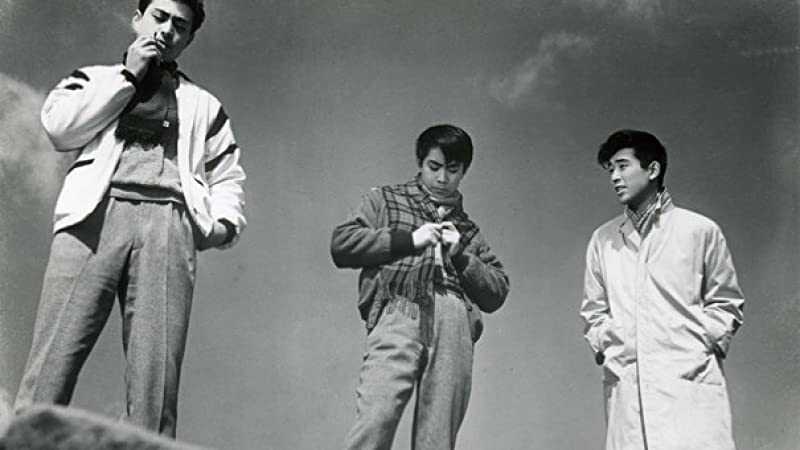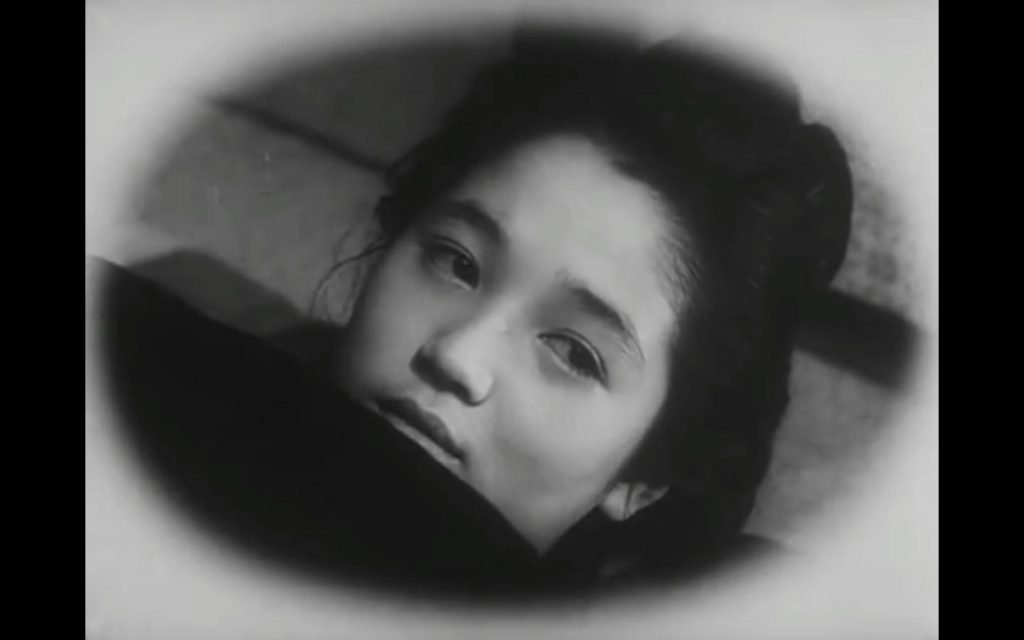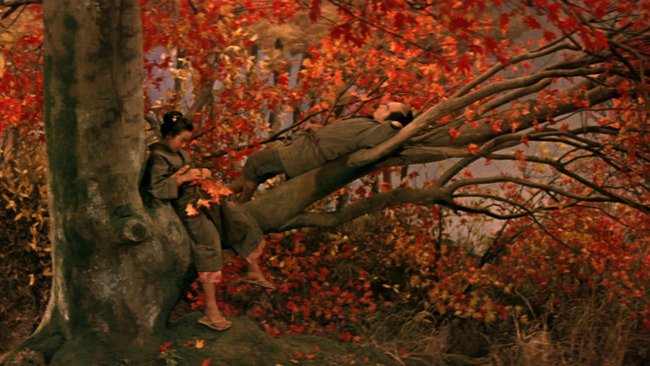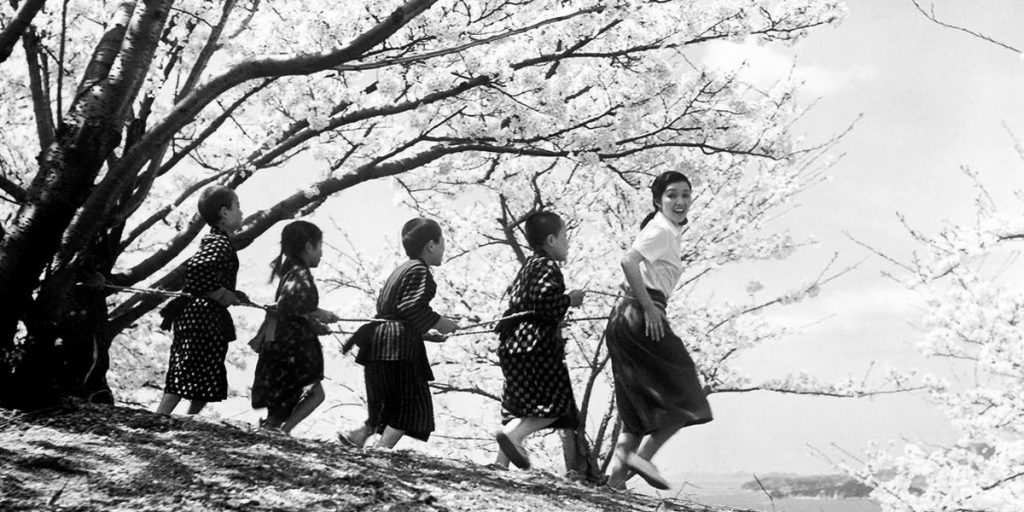Acclaimed in his home country of Japan but sadly obscure elsewhere, Keisuke Kinoshita is one of cinema’s most achingly human and underappreciated artists. Here are his 5 best films.
When talking about the best Japanese filmmakers of all time, the conversation usually revolves around three names: Yasujiro Ozu, Akira Kurosawa, and Kenji Mizoguchi. And while these are all undeniably great directors, there is another name that is almost unheard of outside of Japan, Keisuke Kinoshita. Even though he began his directorial career as a propagandist during WWII, into the fifties he made countless acclaimed dramas. He was easily one of Japan’s greatest filmmakers and was highly prolific until his death in 1998. Perhaps what makes him less well-known is that he is not an artist who is easy to pin down. He continually worked with different genres, embraced various aesthetics, and experimented relentlessly with form. Some of his most formerly ambitious works include Carmen’s Innocent Love, which is shot entirely with Dutch angles, and The River Fuefuki, which includes swaths of color placed on largely black and white frames. In the following list, I look at five of his best films. I hope it serves as a useful introduction to a remarkable artist.
5. FAREWELL TO SPRING
(1959)

Considered to be one of Japan’s first queer films, Farewell to Spring centers around a group of five friends as they reunite in their hometown. They soon realize that the bonds that once connected them have weekend, leading to a beautiful and heart-wrenching climax. While the characters within the film are not explicitly queer, their intimacy can be read as such, especially when one takes Kinoshita’s own homosexuality into consideration. This is exactly what makes the film such an important work in Japan’s history. Queer directors continue to be underrepresented in the mainstream and in film history, especially in Japan where its most prominent directors are largely straight and male.
Kinoshita disrupts a heteronormative approach to cinema history, and this underappreciated gem is a standout not just because of its representation, but also its overwhelming empathy. The story considers the idea of relationships being tested by time, lamenting how friendships crumble under the hardships of life. It is a patiently paced but beautiful meditation on love and nostalgia. While the characters initially seem one-note, each one is used perfectly to round out a flawless ensemble. Perhaps we are stronger together than apart.
4. SHE WAS LIKE A WILD CHRYSANTHEMUM
(1955)

While Kinoshita largely stuck to melodramas as his go-to genre, he was a relentless formal experimenter, as we will see in some of his following films. What is most notable about the acclaimed She Was Like a Wild Chrysanthemum is its approach to flashbacks. These scenes take place in an oval within the frame as if the viewer is looking through a peephole into the past. However, the oval is not a hard line, characters will walk out of frame and into the surrounding whiteness of the edges of the screen, as if they are becoming lost to history. The peephole additionally has the effect of making the viewer feel almost like a voyeur intruding on someone’s intensely personal memories. Memories bursting with pain and longing.
The story surrounds an old man, Masao (played by the always masterful Chishu Ryu), returning to his hometown. While there he reminisces about his childhood and the first love of his life, the love he never forgot. The narrative plays fairly straightforwardly, but the emotional core of the film radiates with the aching of young love amidst a strict society.
3. A LEGEND, OR WAS IT? (Also known as LEGEND OF A DUEL TO THE DEATH)
(1963)

While Kinoshita began his career as a war propagandist for imperialist Japan in the latter years of WWII, he became staunchly anti-war later in his career. Even though A Legend, or Was It is not his first foray into anti-war commentary, it is one of his darkest and most evocative films made with that theme in mind. It takes place during WWII and focuses on a family that moves from a city to the country in order to escape from the war. A story of ostracization and tragedy ensues, all leading to a haunting and violent climax.
Some of the most engaging visuals and editing in any of Kinoshita’s films appear in A Legend, or Was It, most memorably in a scene of unrivaled suspense conveyed almost entirely with zooms. The movie is also a tight 83 minutes, not wasting a second and packing in as much plot, character, and commentary as it can. The score by Kinoshita’s brother and frequent collaborator, Chuji Kinoshita, is moody and melodramatic. Besides being generally anti-war, the film also critiques the effects of nationalism on a country’s culture. We see nationalism turn neighbors against each other, creating a culture that is on the verge of self-immolating. Besides being an effective thriller, A Legend, Or Was It is also one of Kinoshita’s most strident political commentaries, one that continues to resonate.
2. THE BALLAD OF NARAYAMA
(1958)

The Ballad of Narayama is a startlingly experimental work and quite possibly Kinoshita’s formal masterpiece. Some may be more familiar with the Palme d’Or winning remake directed by Shohei Imamura, but the original is just as deserving to be seen. It tells a fairly simple story about a village that practices the tradition of carrying their old to the top of a mountain and leaving them to die. The protagonist, Orin (Kinuyo Tanaka, one of Japan’s greatest actresses), is content to adhere to this rule, but her son does not want to bring her to die.
Kinoshita’s style is a cross between progressive experimentalism and traditionalism, embracing the longstanding style of Kabuki and appropriating it to fit the form of filmmaking. What follows feels almost like a dark fairy tale, told in bright, impossible colors and taking place entirely on gorgeously constructed sets. The artificiality of the world adds to the lurking feelings of fear and unease, and as per usual, Kinoshita finds a strong emotional throughline to tie everything together. A scene of horror plays out entirely in reds, another scene of ancient tradition is emphasized with the use of green. For anyone who loves colors in cinema, The Ballad of Narayama is not to be missed.
1. TWENTY-FOUR EYES
(1954)

Twenty-Four Eyes is Kinoshita’s ultimate achievement. The Japanese cinema magazine Kinema Junpo placed Twenty-Four Eyes at number 6 on its top 200 Japanese films of all time list. Unfortunately, the film is nearly unheralded outside of Japan. It is a grand, immensely moving drama starring Hideko Takamine in what is arguably her greatest performance. She plays Hisako Oishi, a young teacher beginning her career educating first graders on a rural island. The film recounts her life from the beginning of her career in 1928 to just after the end of WWII in 1946. Over the course of Oishi’s life, she sees her students fight and die in the war, all while trying to imbue in her students a humane worldview.
Kinoshita grapples with Japan’s dark imperialist history while also retaining a clear-eyed empathy for his country’s citizens. The sumptuous cinematography aids in the emotional storytelling as well, utilizing expressive and expansive wide shots to capture landscapes in vivid detail. Characters will almost become lost in the dense scenery, as there are possibly forces at work greater than human nature. Personally speaking, I have never seen a movie like Twenty-Four Eyes. It is a true emotional epic, chronicling the hardships of everyday people and celebrating human kindness.

